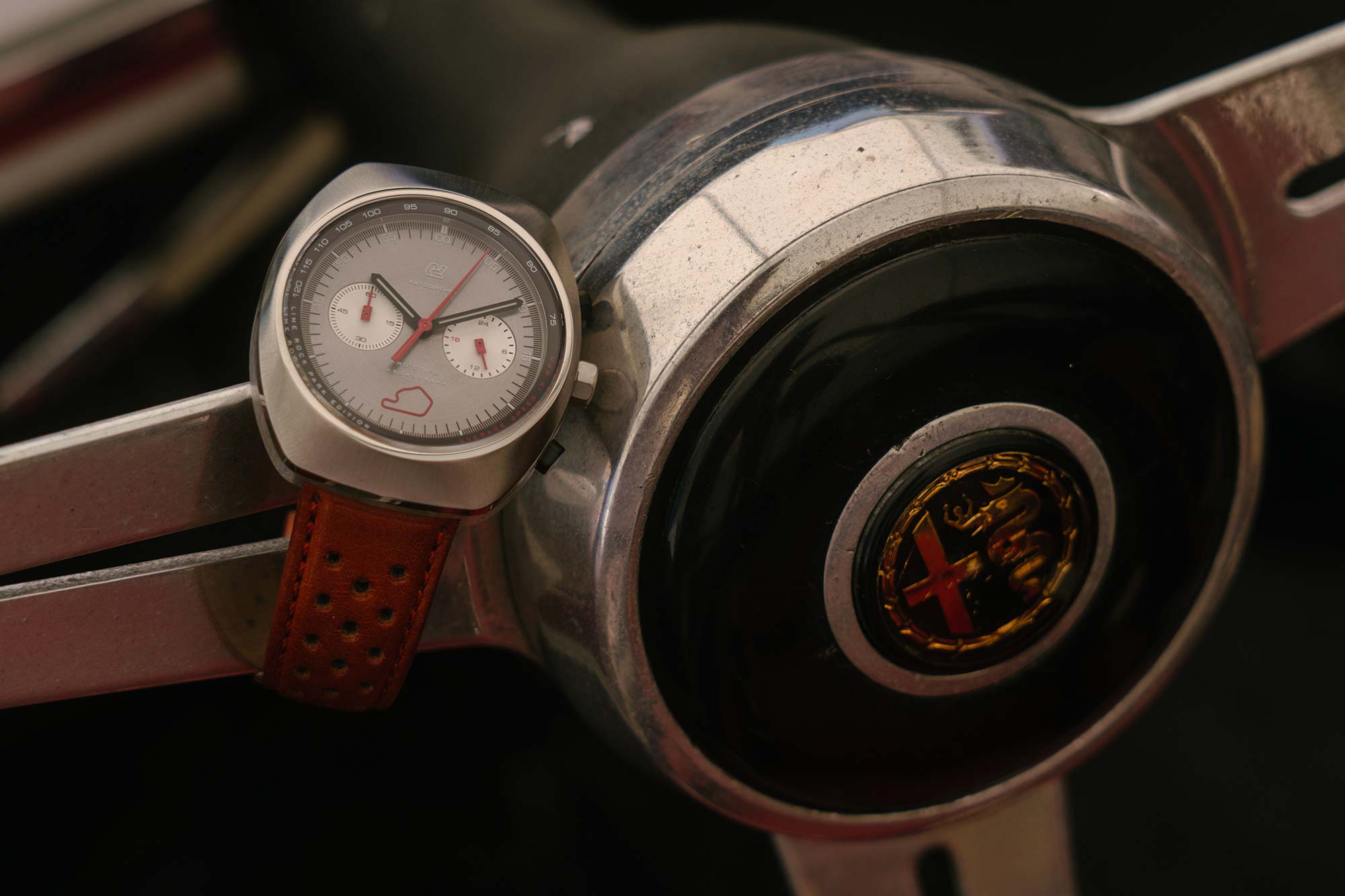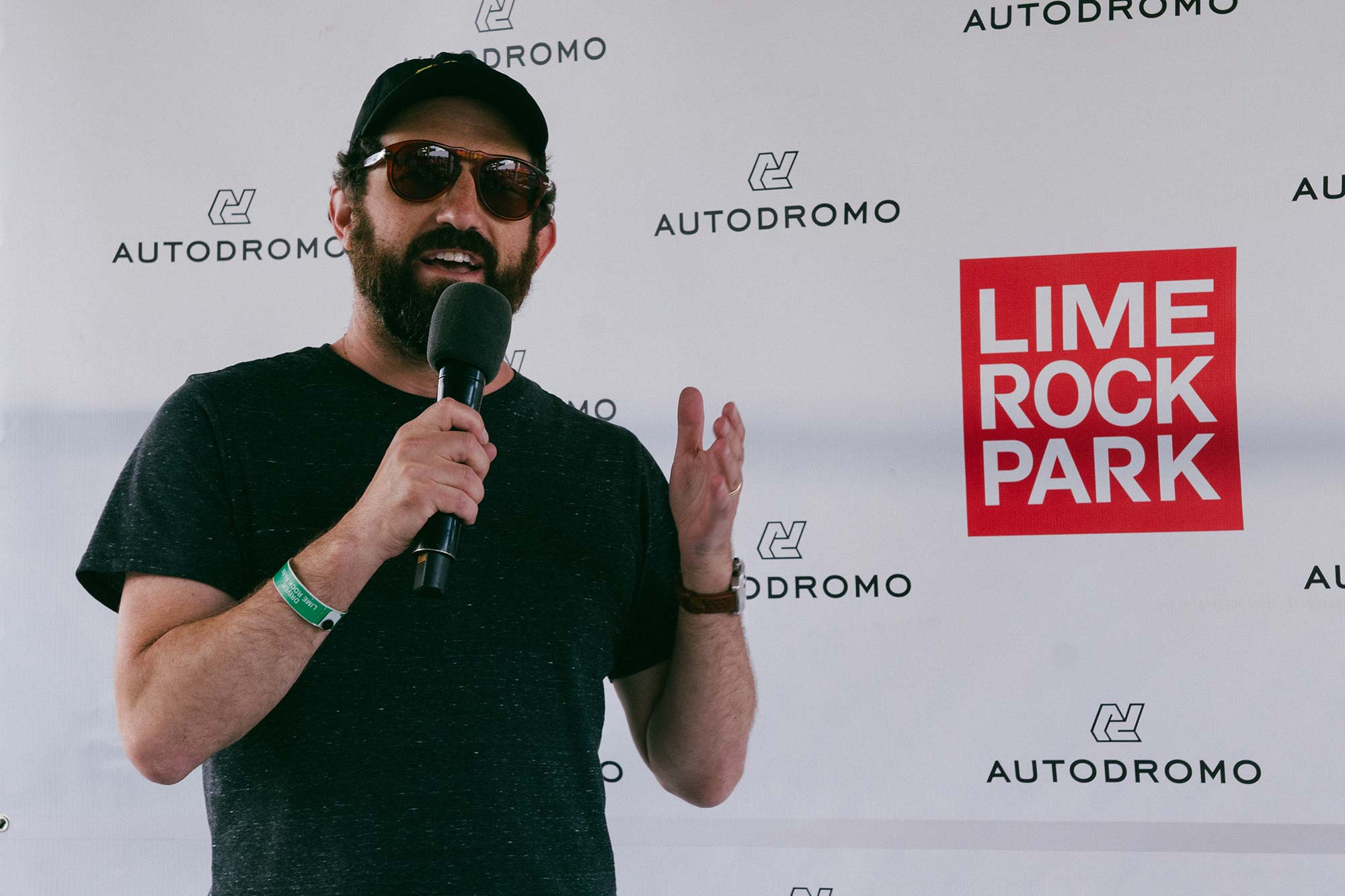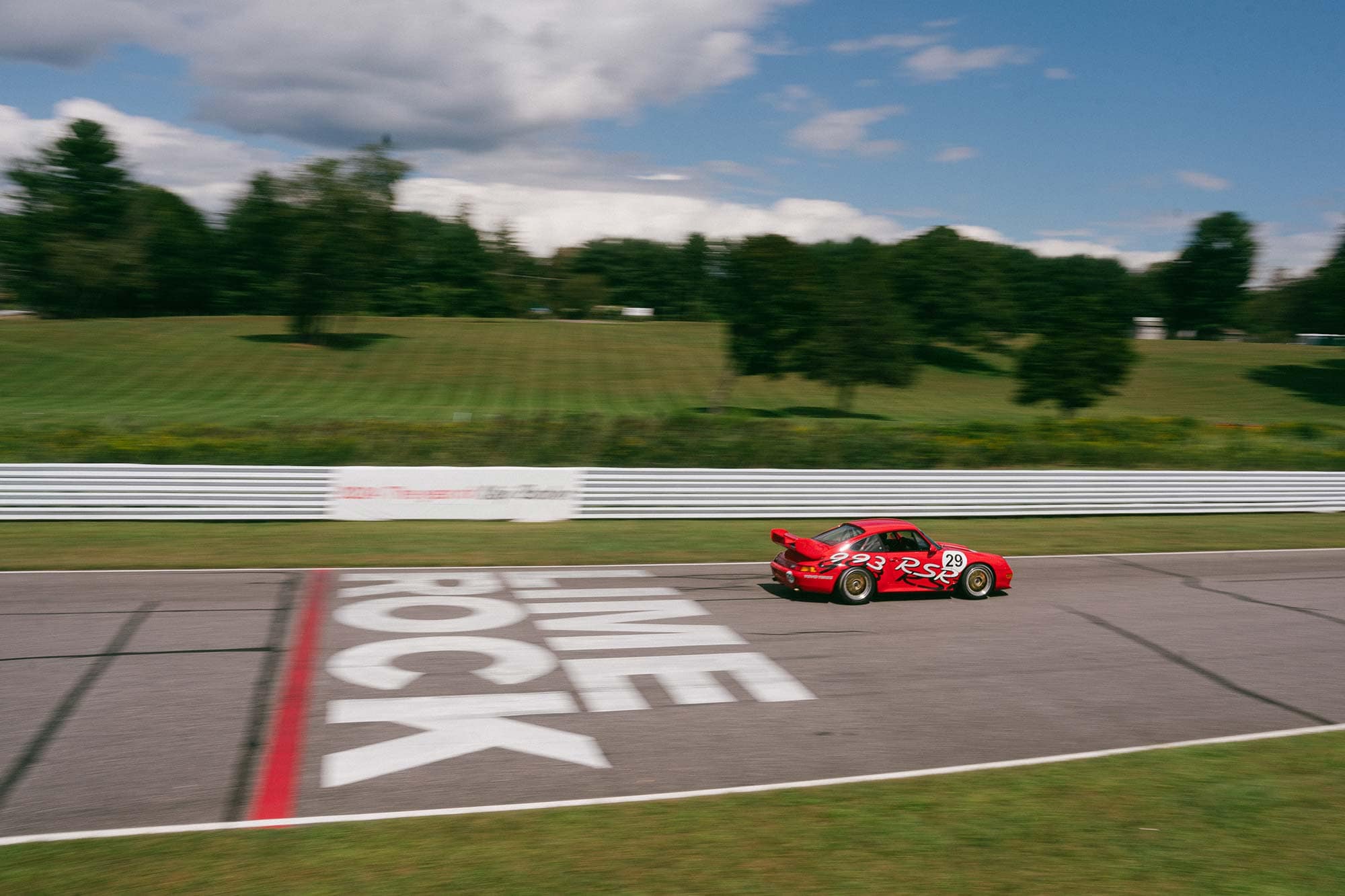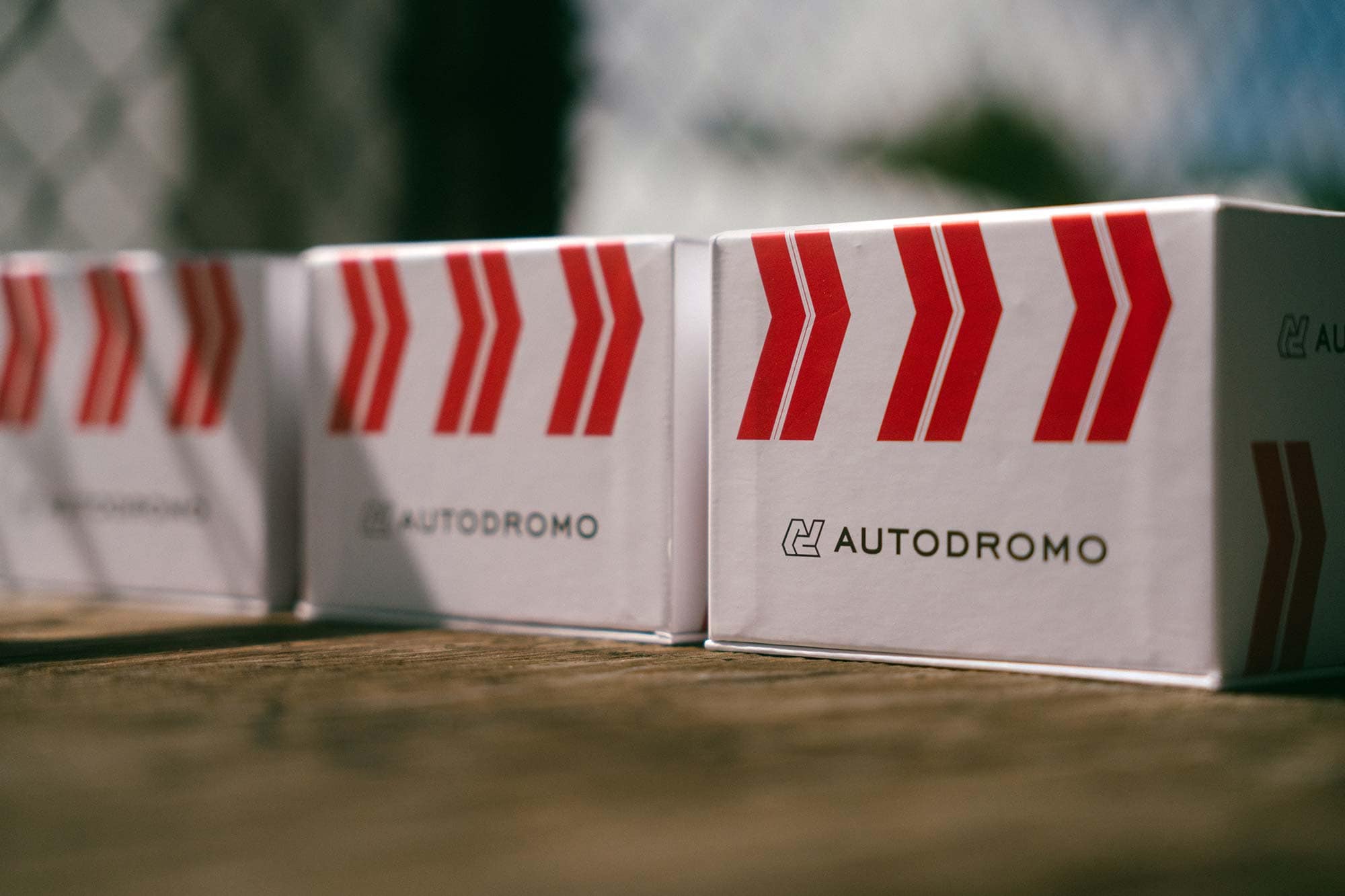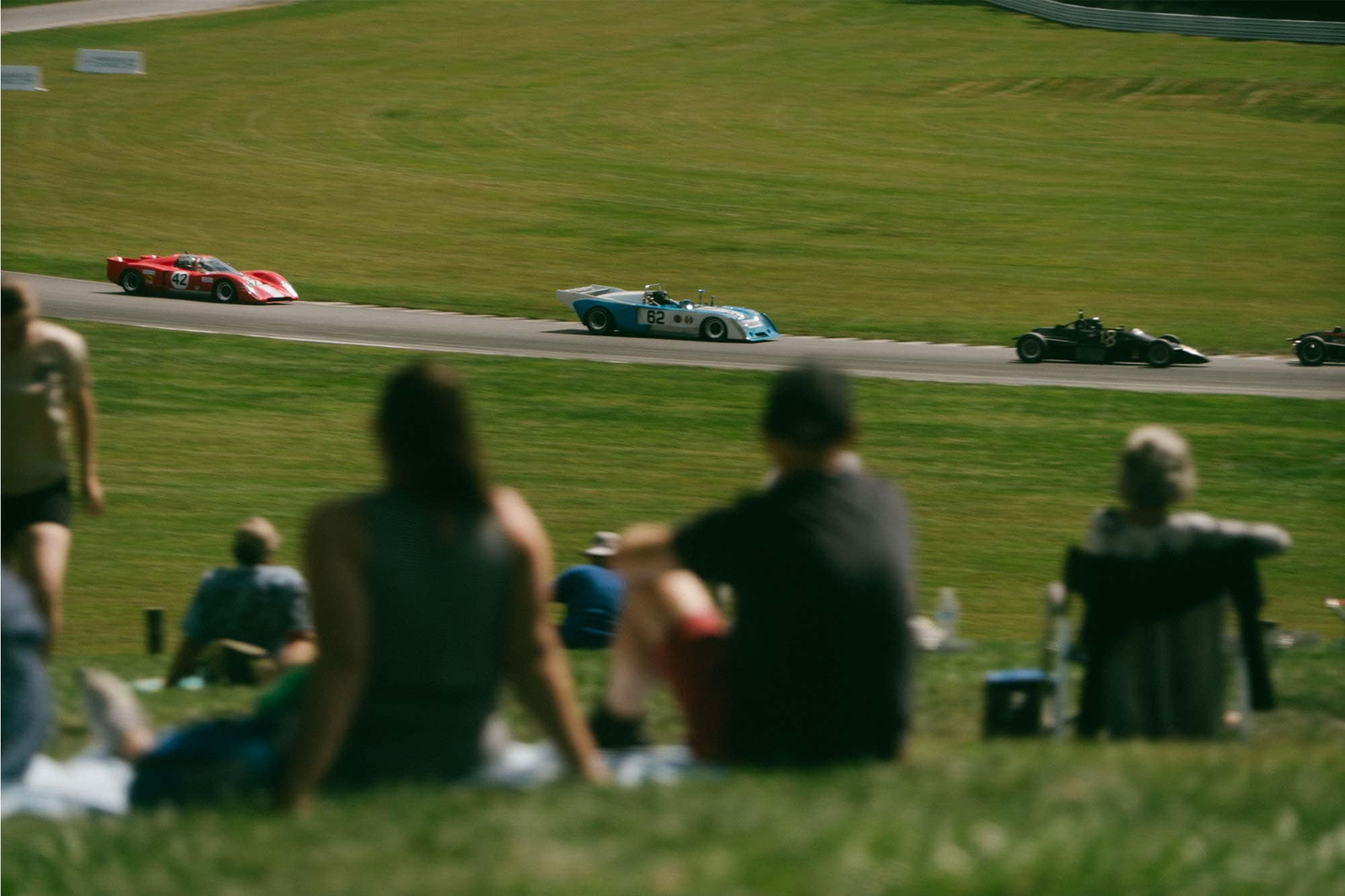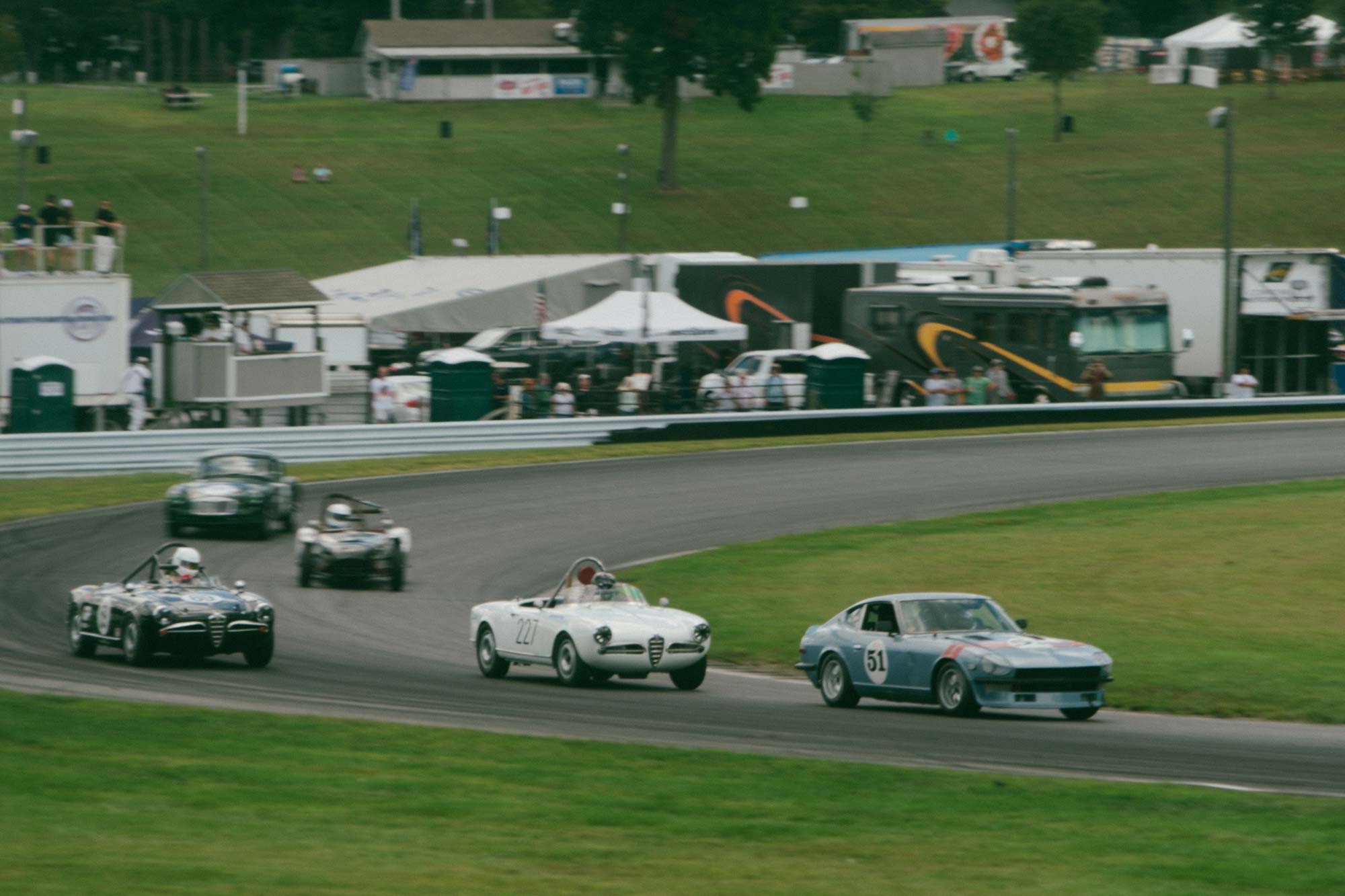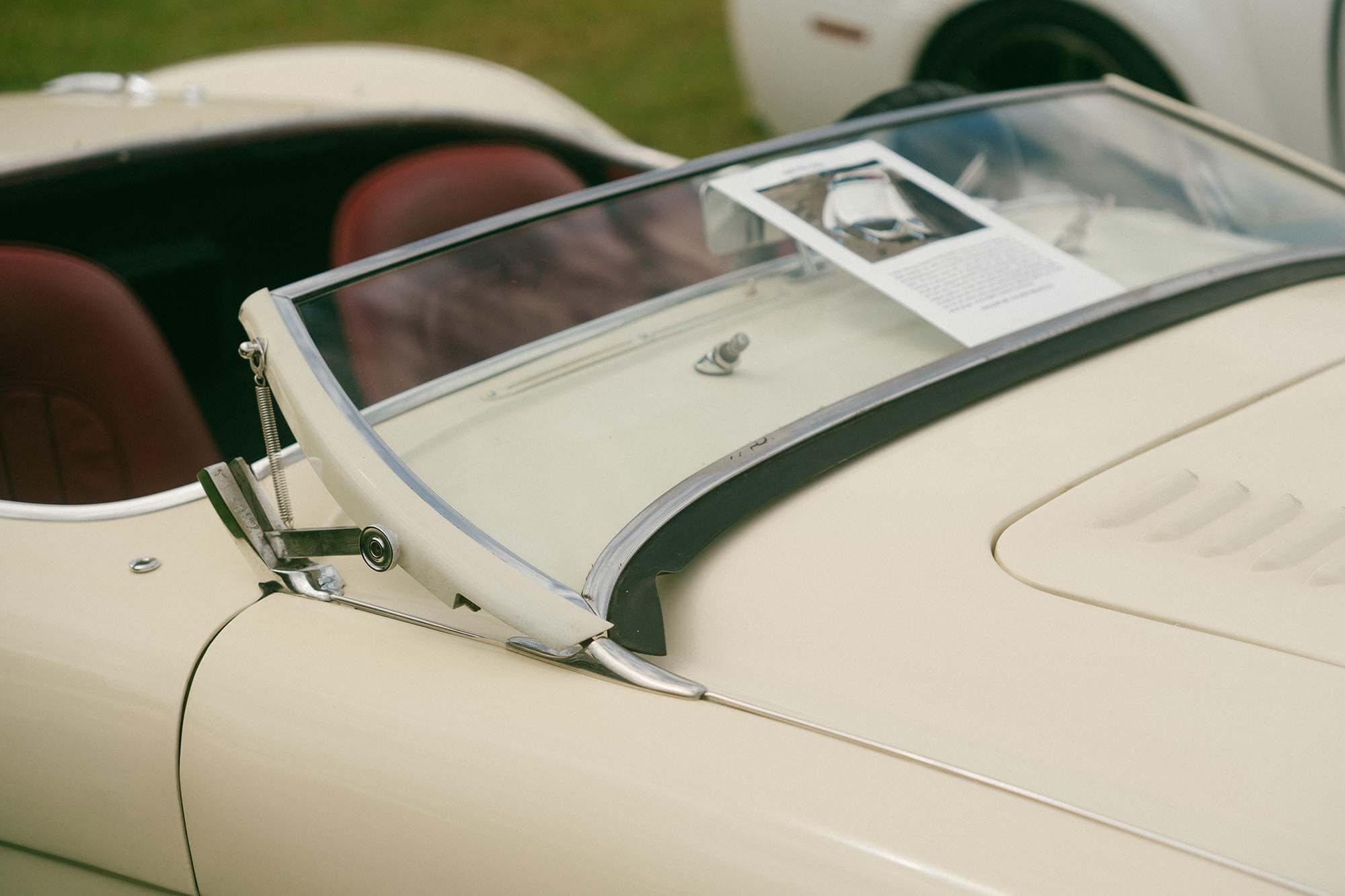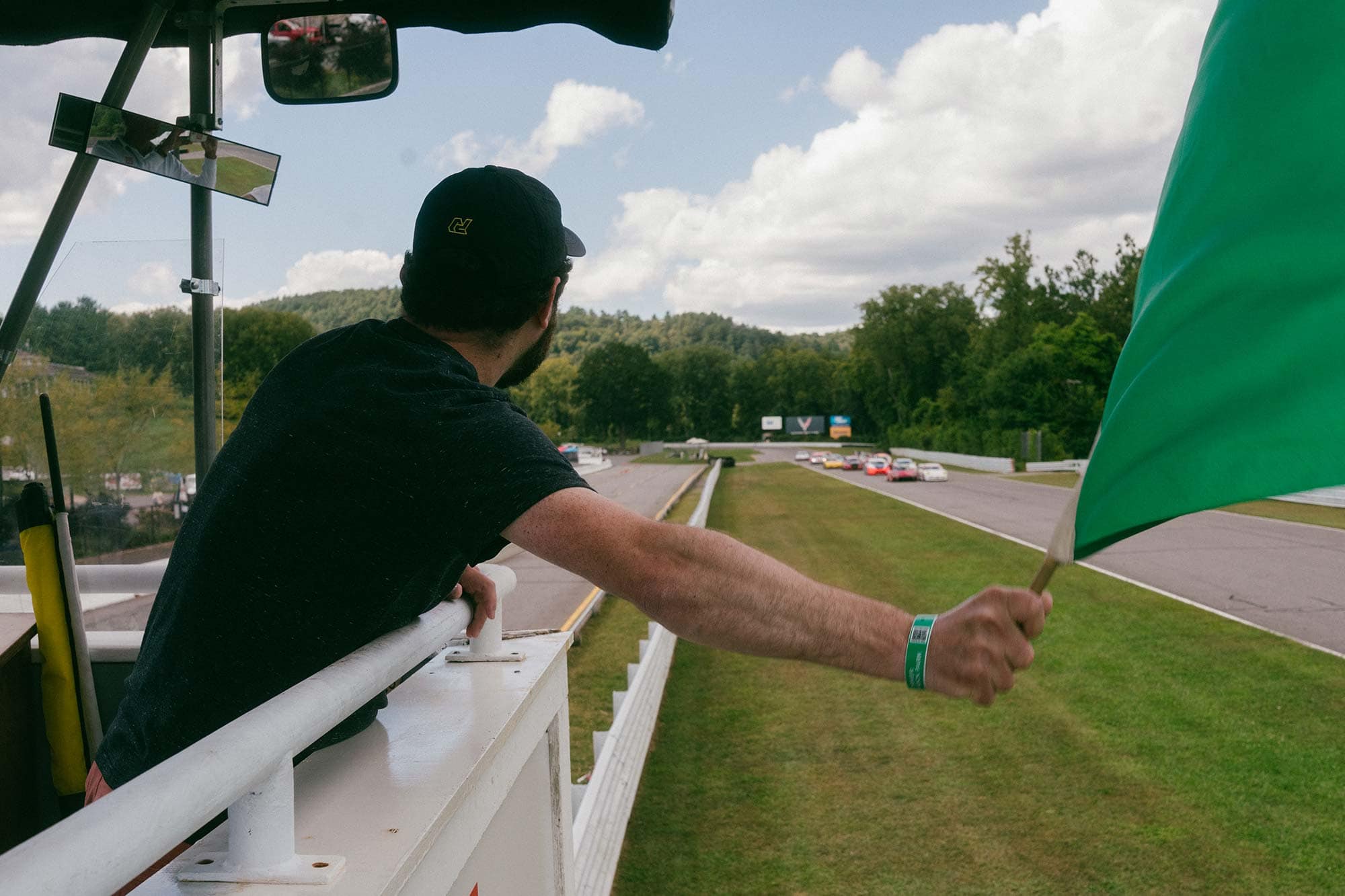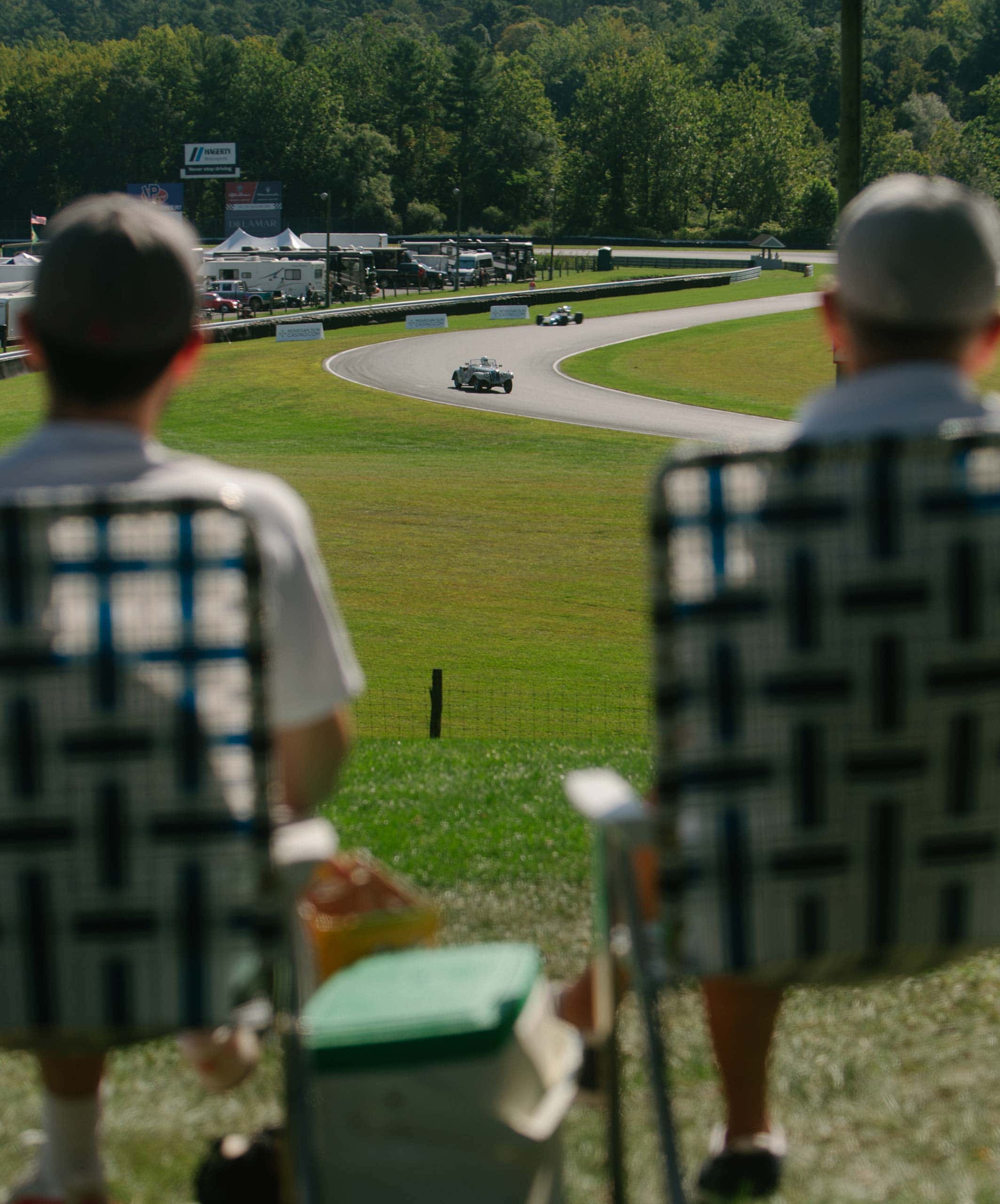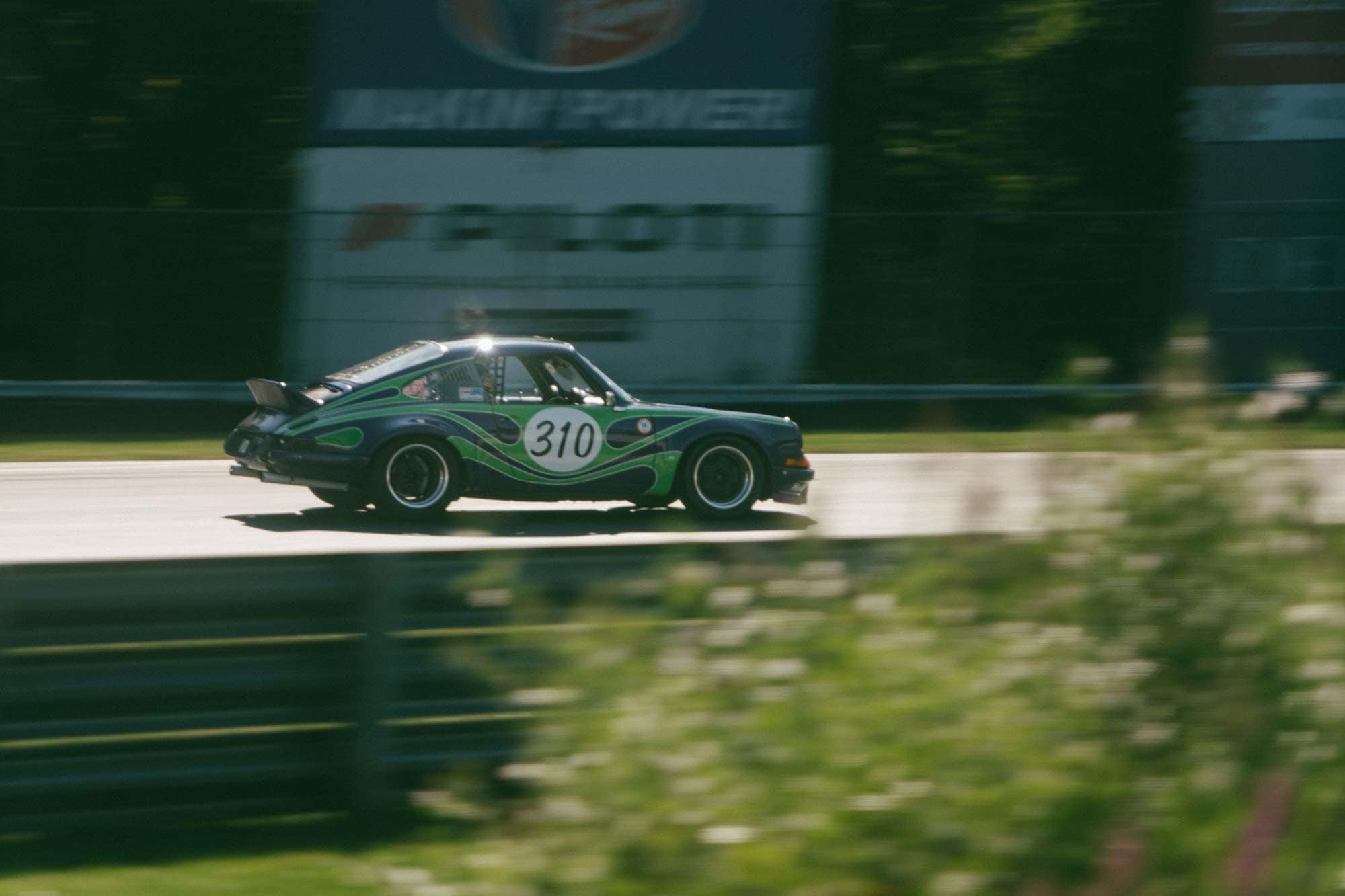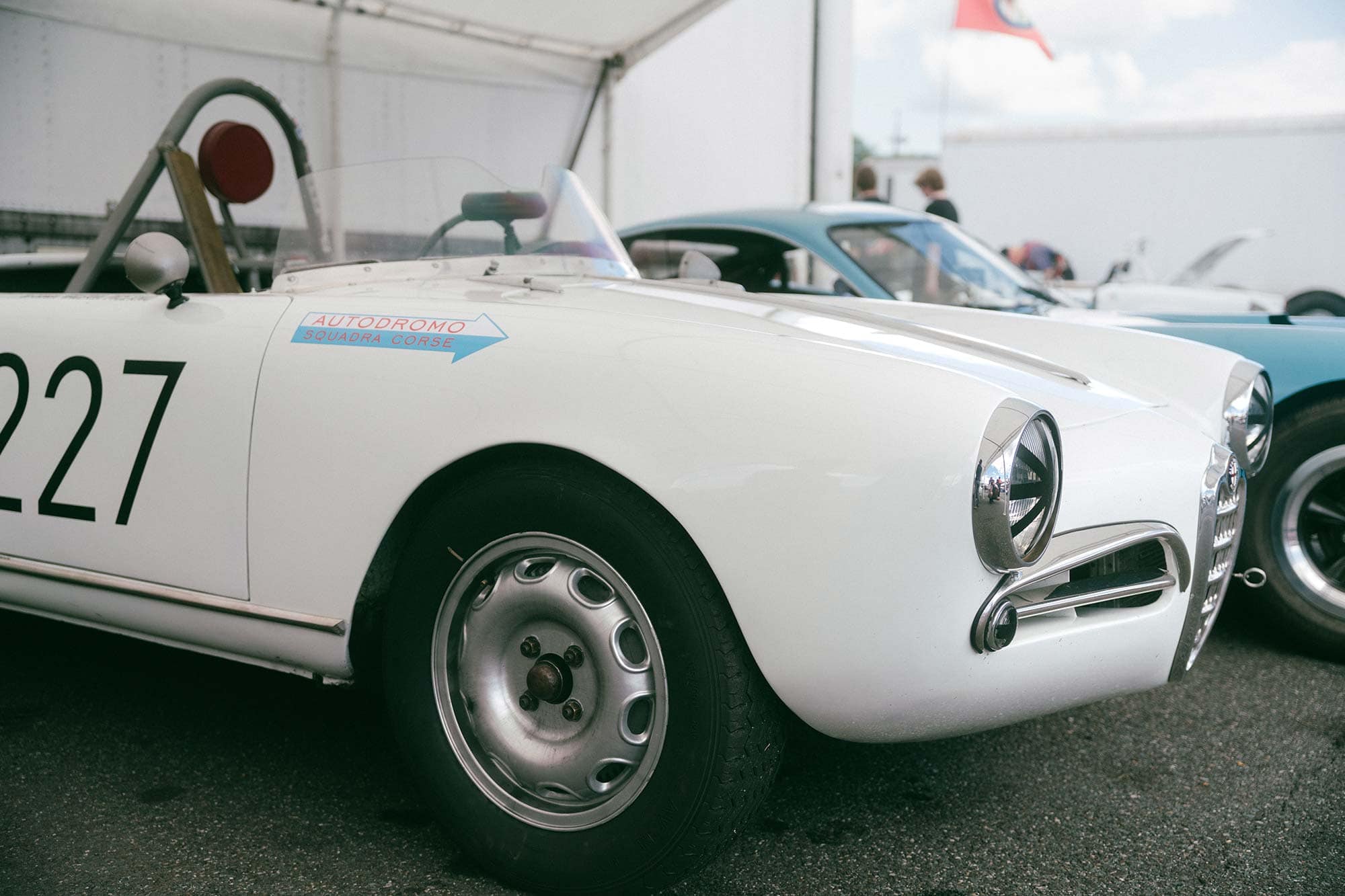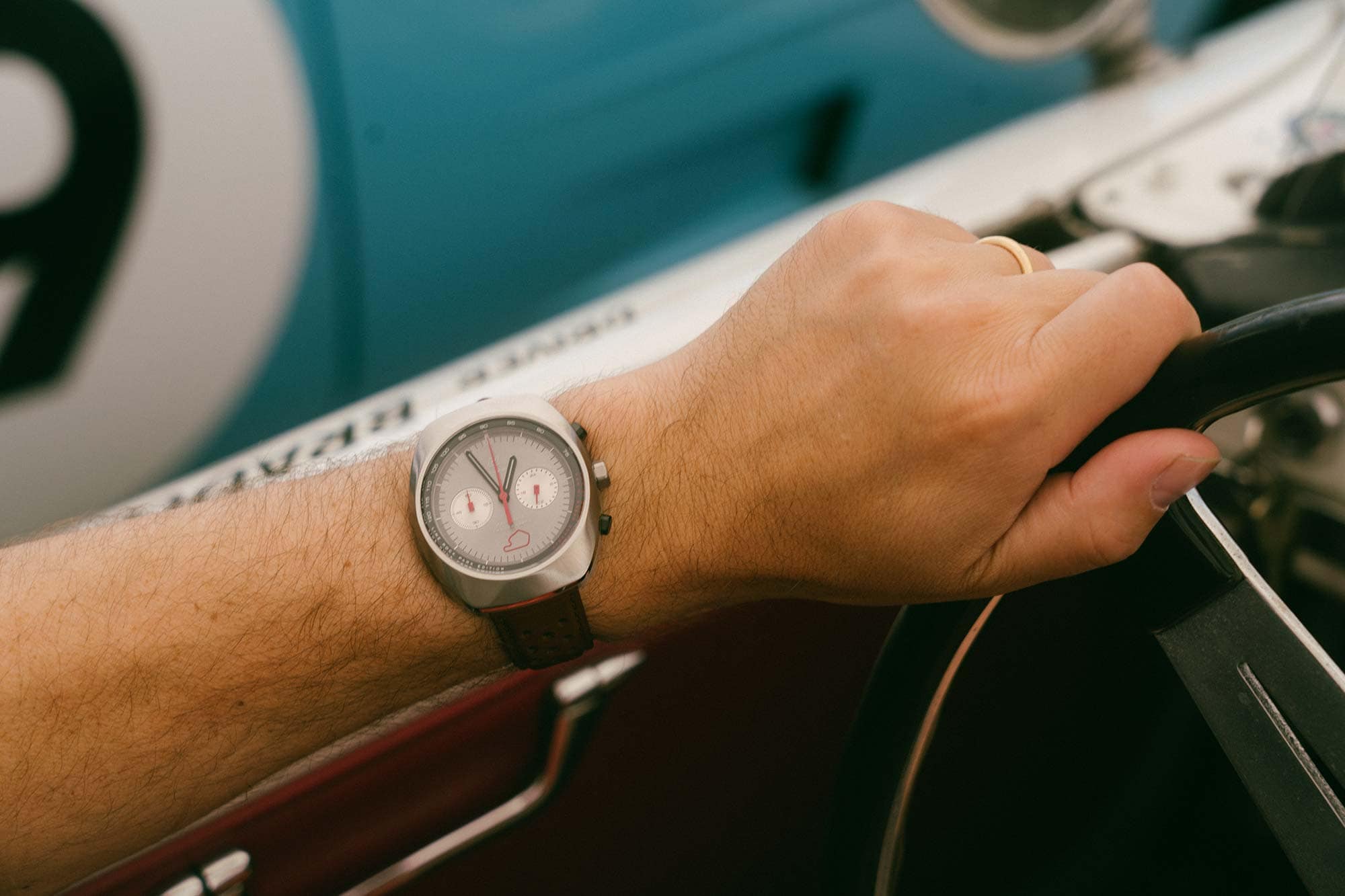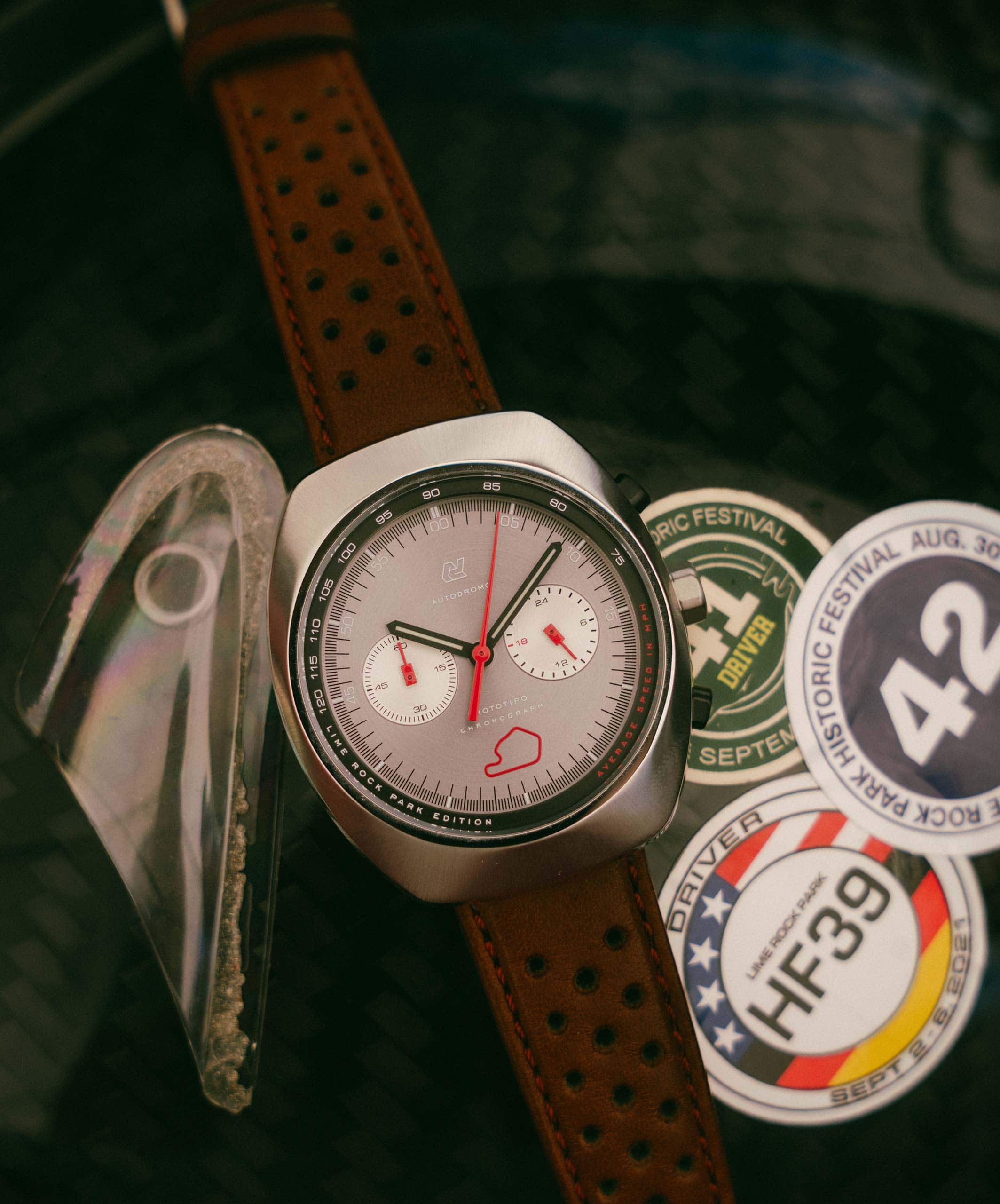At their best, watches should tell a story, and we don’t think it’s too much to ask for a bit of soul, romance, and authenticity with that story. When it comes to Autodromo’s line of attainably-priced, motorsports-inspired watches, everything is a direct extension of founder and designer Bradley Price’s own story and passion for car culture and motorsports. It’s a passion he truly lives, and one that lured him away from a successful career in industrial design to the watch world. In a category that’s overflowing with pretenders trading on aesthetics, the motorsports authenticity and creativity Autodromo infuses their watches with isn’t just refreshing – it’s rare.
We’ve covered Autodromo many times over their 13 year journey as a brand and we’ve even collaborated on several limited edition releases with them, so it should come as no surprise that we’re big fans of Price’s work and always interested in Autodromo’s latest and greatest. Their most recent release drives home the brand’s authentic approach in a major way: An official limited edition Prototipo chronograph that celebrates Lime Rock Park, one of the most storied and important motor racing circuits in the country and Price’s adopted home track.
When we met up with Price at the 42nd Annual Lime Rock Historic Festival to get our hands on the new Lime Rock Park Edition Prototipo, he was quite literally delivering watches to clients out the trunk of the mint 1960s “K-code” Ford Mustang (complete with extra charming vintage Marchal fog lamps) he’d driven to the festival. That Mustang was parked in the paddock near his beloved 1957 Alfa Romeo Giulietta Spider Veloce – a battle-tested race car with period-correct modifications and an understated Autodromo livery that he’d been campaigning in events throughout the weekend. Price had a busy day ahead, one that included waving the green flag to begin a race event as an honorary marshall, photos with iconic racer and Lime Rock’s home hero Skip Barber, and a prize ceremony where he was due to present some of the limited edition Prototipos as prizes to the drivers from each class that raced throughout the weekend as part of his duties as Lime Rock’s official watch partner.
The scents and sounds of the festival provided the ideal backdrop to explore not only Autodromo’s new limited edition – itself a love letter to Lime Rock – but Price’s deep relationship with motorsports and the track itself. As classic race cars ranging from esoteric pre-war antiques, to screaming air-cooled Porsches, to burley, big bore “fast production cars” duked it out around the legendary short track, Price took time between his own races to bring us inside the easter eggs within the design of the Lime Rock Edition Prototipo, the humor that people often miss within Autodromo’s designs, and looks back on 13 years of Autodromo while considering where the brand will go next.
How have things changed for you since starting Autodromo in 2011?
In the last couple of years, I’ve definitely focused more on an ‘80s and ‘90s aesthetic. Prior to that, we were really more focused on a type of heritage design that looked to the ‘50s and ‘60s spiritually. There are still going to be new products that are in that spirit, so I haven’t gone away from it entirely, but the focus of the brand has gone more in a ‘80s and ‘90s direction. That happened naturally, but it also really resonated with a lot of clientele, especially people in their 40s and 30s that are really our core customers. The things I design that look to those later periods tend to sell really well.
Also, the market was getting oversaturated with ‘60s and ‘70s style chronographs. A lot of competition came in that wasn’t there when I started out and it’s getting very crowded with Seiko Meca-Quartz racing chronographs, and it feels like there’s still more coming out every day. We obviously still have one of those in our range, but when we first launched the Group B in 2015 with the seatbelt strap, it was really a breath of fresh air. I try to go where other brands aren’t, that’s why I leaned in the digital direction with the Group C. I want to create products that stand out from the crowd and are unique and special.
When we originally did the Prototipo in 2014, it was unique and special. I see you’re wearing a vintage Heuer Montreal right now, and the Montreal and the Speedmaster Mk. II were some of the inspirations for that watch because there weren’t any modern versions of that stuff available at the time. Now there are a lot more options for watches with that style out there, but at the time, that watch was about going somewhere other brands weren’t. That’s been my ethos for most of my career.
It’s a little funny that the boom in affordable motorsports heritage-inspired watches seemed to coincide with the vintage Heuer market tanking.
Yes, and when I created the Prototipo, the Heuer market was on the upswing and doing great! I created this watch as a modern alternative to those vintage Heuers and we actually sold a lot of them to Heuer collectors. The feedback I got at the time was “Oh, this is perfect! I could wear this to the beach or on vacation and leave my favorite vintage chronograph at home.” It’s a waterproof watch with a sapphire crystal and modern refinements, so while it was definitely about a specific aesthetic, it was also meeting a need that wasn’t met at the time.
So you feel that Autodromo’s still got work to do within the visual lexicon of the ‘80s and ‘90s?
I don’t want to overdo it, but we do have another piece coming next year that will be a ‘90s inspired design. It does have a digital aspect to it, but is an analog/digital hybrid. However, after that release, we’re going to come out with our take on a classic dress watch that’s got more of a ‘50s/’60s-inspired style that is more in keeping with some of our earlier designs like the Stradale and the Intereuropa. Those are watches that have a separate clientele and those people are saying to me “I really dig the Group B, but it’s not really my thing. My Stradale is 10 years old now and I’d like to buy something new that’s in that style.” I don’t have something for that customer in the lineup right now, so that’s going to come back.
This brand is a direct extension of your world as a racer and someone that’s deeply invested in the motorsports world. There’s been a real explosion in the general public’s interest in motorsports over the last five years. Have you found that growth impacts Autodromo?
As far as the greater interest in motorsport, yes, that’s definitely benefited us. However, I don’t feel like the renewed interest in Formula One in America has directly translated into sales for us.
I actually think there’s another shift that’s going on that ties back to your point about the Heuer market: I think the general population has a little less interest in collecting vintage things than they did 10 years ago. There was a real moment where people were rediscovering old stuff and that coincided with things like Hodinkee publishing all these columns about vintage Heuer or vintage Omega and educating people that had no background or understanding of the vintage watch world at all. In those early days, the blogosphere of menswear and watches really impacted the interest in vintage then, and I feel like things are more commodity-based now. People in general are more interested in pre-owned and not as interested in the act of collecting and hunting for things.
One of the biggest things I’m noticing after 13 years is we’ve had clients who have matured with us. People that were like a 24 year old salary man that are now mid-career and have remained loyal to the brand. Part of this business is about bringing new people in the door, but the other side is maturing with our audience and their changing tastes. Offering them new variations on things they already like is something I never really had to do before.
Being that Autodromo is such a direct extension of your own interests in motorsports, where are you headed as an enthusiast and racer these days? How will that influence the aesthetic of the watches?
That’s a good question. I’m trying to capture a vibe and I might make several attempts at capturing that vibe with different executions. So in a way, the Group C does overlap with the Group B in terms of the time period it pulls from. Yes, it’s a very different watch and a very different execution of that aesthetic, but they look like something from the same era. The next watch that’s coming is another attempt at capturing the spirit of that time period, but it does so in a very different way. It has a little flavor from each of those two watches, but it’s its own thing. I do the same thing with my interest in cars, where I go through different phases of cars I’m interested in and want to capture the feeling of that phase. I just want to make things that take you back to a place and a time and in this case of the ana-digital watch we’re working on, it’s meant to be a little like a toy, but also more of a substantial watch than the Group C – which was purely meant to capture the fun of a digital toy watch with an elevated quality. With this next watch, I’m trying to fold in some cultural elements of the time. Some of the colorways are inspired by Patagonia’s palette from the ‘90s.
I do love the sense of play a watch like the Group C has. It certainly sets the brand apart from other motorsports-inspired watch brands.
There’s actually a lot more humor and irony in some of my stuff than people tend to get or realize. I feel like people take watches way too seriously. Frankly, they take cars too seriously, too.
Any time people are deeply passionate about something, they also run the risk of getting up their own asses about it. What’s an example of something funny from the Autodromo line that people may have missed?
I mean, the whole point of the Group C was that it was supposed to be ironic. People were like “Oh, this is just an expensive Casio blah, blah, blah!” and it was like ‘Yeah! That’s the whole idea!’ That was the joke – it’s a really high end version of a cheap watch. It’s a really well-executed take on something playful. It was to make something unexpected that had a super normal aesthetic that you think you’ve seen, but you haven’t. That was meant to be ironic to some extent, but it’s also meant to be a high quality, premium take on that kind of watch. I don’t think everybody necessarily got that irony or humor. People also didn’t understand the reasoning behind why it was expensive and why the parts that we made to produce that watch were so costly.
I’ll give you another example: The Monoposto is a watch we made based on a tachometer. A tach would say Giri x1000, so 1000 revs or turns. I changed the word “Giri” to “Ore,” which is hours. Now it’s taken the visual idea of a tach and applied it to a watch, but it’s telling you that this is hours x100. So it works on a functional level, but it’s also meant to be tongue-in-cheek and funny in that it’s saying x100. So many people asked me why “Ore x100” was on the watch or totally missed the joke. I like to leave things a little ambiguous. When you over-explain things, it takes away the magic. I hate having to explain the fun references in our watches because of that.
We never shoot any photos that directly show a watch next to the gauge that it’s based on because I think it takes away all the magic. I always like to abstract things so that it’s never exactly identical to the gauge it’s referencing anyway, where there have been companies that have made things that are exact references to a specific gauge, and they take all the text directly from a gauge and apply it to a watch. A watch’s dial should never say “Giri x1000” because it just doesn’t make any sense! I really try to set Autodromo apart by translating a gauge’s aesthetic into an actual timepiece, rather than just making a direct copy of something as a watch.
Is there something that defines the typical Autodromo fan?
I’ve met a lot of our customers in-person over the years and we tend to sell to people who appreciate design first and foremost. That’s our number one distinctive shared characteristic between customers across income level. We have clients who have collections full of crazy pieces – anything you could name – and I also have customers whose only watch is an Autodromo. I love that, because those people have a unifying characteristic in that they’re very self-contained people. I find they’re the thought leader in their friend group. Those are the people we sell to, not so much the value customer that’s going to look at all of the Seiko VK watches and find the cheapest one. There’s a lot of people in the watch sphere that shop that way, or cross-shop for hyper-specific features, and we don’t really win there. We are more expensive than some of our competitors. We aren’t as logical as some of our competitors in that we don’t get our watches COSC-certified just for the sake of it. Those are not things that are values of the brand, but they’re also not what our customer really fundamentally cares about. It’s about style, history, storytelling, and it’s about how you feel when you wear it. The feel and the vibe is what people love about the brand and as long as I keep that alive, we’ll continue to be successful I think.
What do you want someone to feel when they wear an Autodromo watch?
First and foremost, when people open the watch, I want them to get the feeling of opening a present – even if they bought it for themselves. They should have the excitement that you felt as a kid when you started opening a new toy. That’s why we’re known for our packaging being great, because it should be a special occasion when you get a new watch.
I also want them to feel as if it’s made for them personally. With the Group B, I can’t tell you how many people told me it speaks to them on a very deep level and triggered childhood memories and feelings. That’s when I knew I did my job with that watch. Connecting people with those feelings is a way more meaningful thing to me than someone saying “You guys make such a great value product.” No one wants to hear that. It’s great if someone feels our products are a good buy, I appreciate that. When someone tells me “I felt like I was about to get into the DeLorean from Back to the Future when I put this watch on,” it’s like we are of one mind.
I would love to hear your side of the story of the ROCS Tatooine Porsche 911/Group C watch collaboration.
I’ve known Rich Gonçalves of ROCS for a while and I have a lot of respect for his passion and what he does and the craftsmanship. Rich puts a lot of himself into the work and it’s not just making really slick Porsche builds; they’re very idiosyncratic and unique, and very much an extension of him. So I feel like Rich is a kindred spirit in that he does things that he thinks are cool for him and for his audience, and that’s it. So when he said “Hey, I have this idea for a watch to match a Porsche 911 from the Star Wars universe and I’d love to use the Group C as the basis for it.” I just said ‘Great, do what you want!’ I had no creative input in it, so it wasn’t really a collab in that sense because I wanted him to do his thing. I was really curious about what he was going to do with it, so I just gave him the canvas and painted it.
I knew he was going to beat it up and give it a patina and put his signature touch on the watch. I told him the one problem he’d have was he wouldn’t be able to scratch up the sapphire crystal easily and it’s still going to look really pristine no matter what you do to it, and of course it is on both watches, but it’s functional. It was just a fun thing, and I enjoy that he was able to express himself through that process, and I respect him as a fellow creative. Rich isn’t just a mechanic or a car builder, but a creative person.
Tell me about the design process for the Lime Rock Edition Prototipo. Why did you guys decide to vamp on a model that was already in the line, and what was the creative process like?
Because it’s celebrating a racetrack, the watch had to be a chronograph. The reason I went with a Prototipo is it’s a small enough edition that a totally new watch didn’t make sense, and it was the design from our portfolio that fit the best. The unique character of Lime Rock stems from it being such a short track; 45 seconds is close to the lap record and most racers lap it within a 1:15 in a decently quick car. That short lap time was ideal for a watch like this because the top half of the watch’s dial covers around 85% of people’s lap time around Lime Rock. The watch has a minute counter, but because of Lime Rock’s short laps that are typically under a minute, you can focus on wherever that chronograph stops in the top half of the watch and instantly calculate your average speed based on the lap length of the circuit – which is 1.25 miles. So it became obvious that this track is really well suited to a watch where all of your timing information is available in the top half of the dial. So we focused all the attention on the details in the top half of the dial and deliberately put less information on the bottom of the dial, which made a perfect space for a track map there – which is really what people want to have just to identify that it’s a Lime Rock watch. We got rid of the date, because we don’t need the date to race.
We also have a few little easter eggs: At Lime Rock 6 PM is the witching hour and all engines absolutely need to be off at that time to keep the noise down for the neighboring community. I have been yelled at personally by Skip Barber for missing it. So the 18 on the watch’s AM/PM indicator is red because that’s the 6pm indicator. It’s a fun detail for people who come here a lot now and know the 6pm engine cutoff time is such a big deal.
The dial color took some time to figure out and while red, white, and black are Lime Rocks primary branding color, I came up with this steel gray color that I call “Litchfield Mist” because there’s fog here in the mornings all the time, so the dial color really matches the sky around Lime Rock perfectly. The name of the color is a little tongue-in-cheek reference to “red mist,” which for a racing driver is when you get target fixation and get upset because someone’s blocking you, then you make a mistake and you crash.
You really do live the lifestyle of the brand. I think that’s a rare trait in the watch space these days.
I brought everything up in the trunk of the car. Would I love to have a booth with a professional sales rep that’s like standing around all day showing watches? Yeah, and we would probably sell more watches if I were to do that, but I think that our customers appreciate the idea that they are literally getting the watch handed to them by the owner of the company out of the trunk of a vintage Mustang. That’s how I operate, but it also becomes part of the story of their watch. That’s the vibe and the informality of the brand; part of it is resources, of course, because we’re not very well capitalized. An example is I was the sponsor of this concourse event in Rhode Island, and it was a big reach for me to do that. It wasn’t a great fit in the end, which is fine, but the following year A. Lange and Söhne were the watch sponsor. They built this massive lounge and had a six foot tall replica of a watch, and it was so over-the-top, and while there’s a time and place for that kind of thing, Autodromo is not that. Even if we were really well capitalized and I had an investor with millions to burn, we would never do that because it’s just not the ethos of the brand. It’s all about snob appeal and creating that persona and I’ve never tried to be that and that’s not what the goal is for me. I think where we stand out in the affordable space is that there is authenticity and we’re not just phoning it in. There are competitors who I won’t name that make a watch that’s named after a race track they’ve never even been to, they have no relationship with, and I think those things come across as really false and hollow. Autodromo






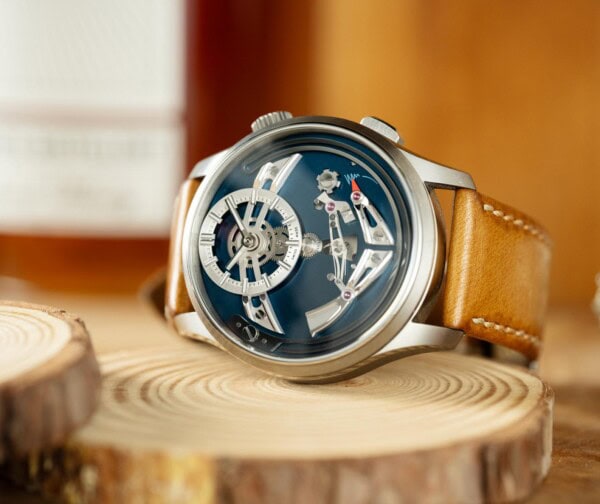


 Featured Videos
Featured Videos




